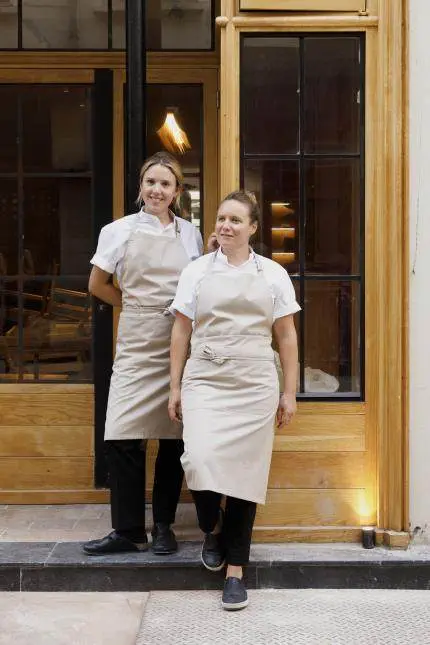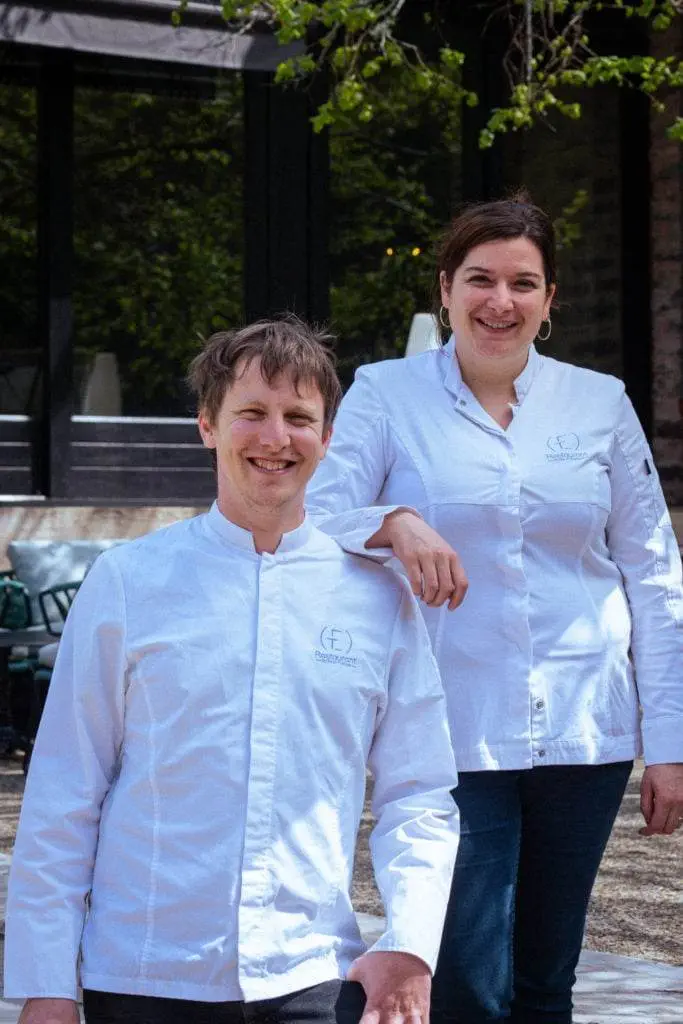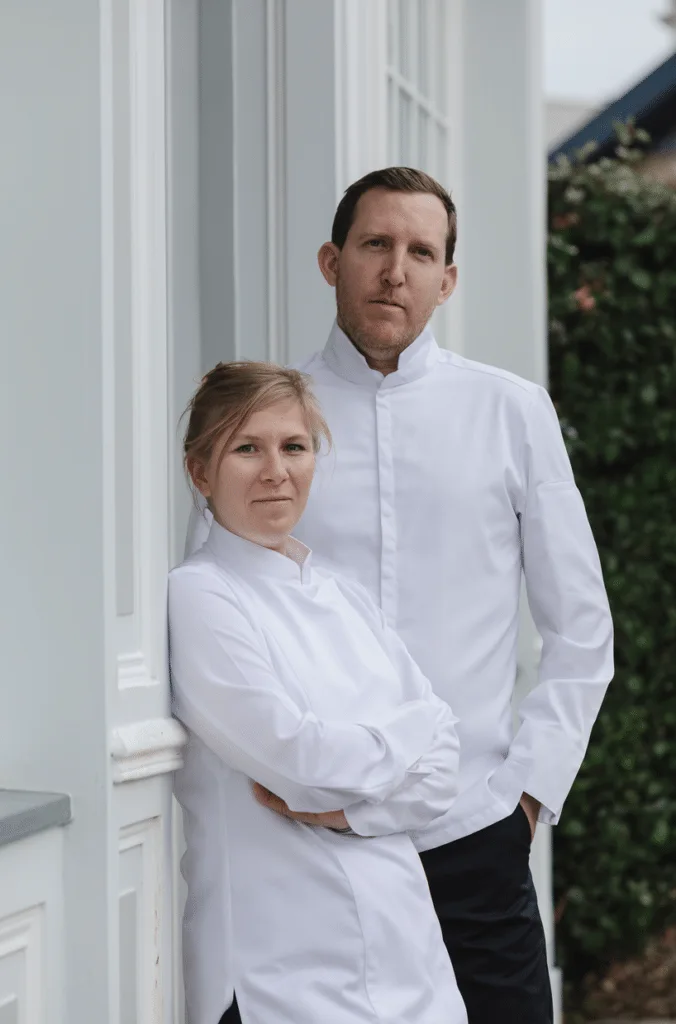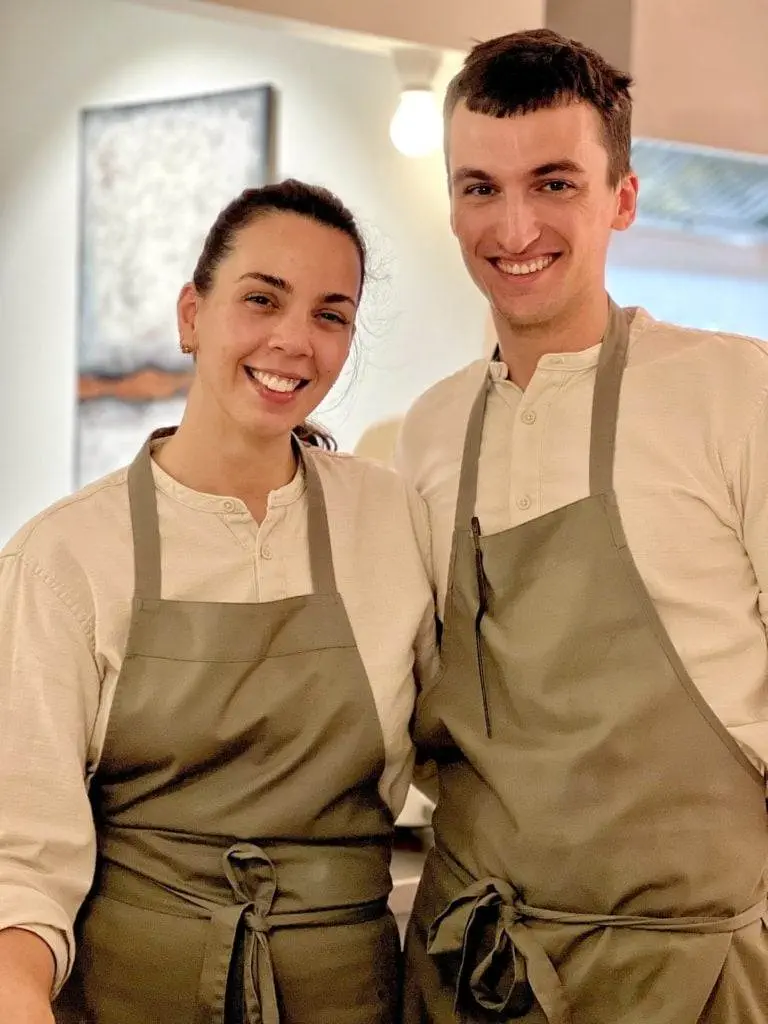By Clare Crowe Pettersson
Paris│28 March, 2024
Earlier this month, The MICHELIN Guide revealed its 2024 selection of top restaurants in France and Germany. The century-old institution can make or break a restaurant. It could also be doing a lot more to break the glass ceiling.
Leaning on young chefs to grow its audience and stay relevant, the Michelin Guide has focused in on the next generation of industry leaders under the age of 40. While more young chefs than ever were honored by the prestigious award, the Guide faces criticism for its continued disparity in gender representation.
The Michelin Guide France includes 639 Starred French restaurants—the most of any country in the world. With 52 chefs celebrating their first Star this year, only six women were among them. In Germany, only three of the 36 Starred restaurants have women as head chefs.
The women behind France’s 2024 Michelin Stars






Eugénie Béziat, the first-ever female head chef at the Ritz Paris’ flagship restaurant, L’Espadon, was the only woman awarded her own one star. For reference, Auguste Escoffier, Worldchefs’ first honorary president, was the Ritz’s first head chef, co-founding the luxury hotel in 1898.
Anne-Sophie Pic remains the only French female chef to earn three Michelin stars for her restaurant, Maison Pic.
Manon Fleury and Laurène Barjhoux earned a star for their Paris restaurant Datil.
Adeline Lesage of Nacre, Emilie Roussey of Le Moulin de Cambelong, and Florencia Montes of Onice earned a star alongside their male co-chefs.
With more and more female-led top restaurants, why aren’t they in the Guide?
About a quarter of chefs are women, and more women are working in kitchens than ever before. So why is recognition so elusive?
In her speech at the 2024 ceremony, The Michelin Guide’s International Director Gwendal Poullennec asked, “Where are the women? Too few women are leading kitchens, despite the fact that more and more of them are working in kitchens.”
A study conducted in 2022 found that of the 2,286 Michelin-starred restaurants spanning 16 countries, just 6% were led by women, and the percentage of the World’s Best 100 restaurants with a female head chef just scratched past 6.5%. For every female-led Michelin-starred establishment, there are 16 run by men.
Industry awards like Michelin are the epitome of global recognition for chefs and restauranteurs, with the power to determine their success in the fine dining realm. With such an established platform to lead, they have an important role in the movement towards a more diverse, equitable, and sustainable hospitality sector.
Increasingly, women are in top kitchens around the world. The question isn’t just “Where are the women?”, it’s why aren’t we honoring the whole cast of characters, male and female, behind a restaurant’s success? Michelin Stars are not awarded to chefs, they are awarded to restaurants. However, the reality is that the system gives credit to the head chef and does little to platform the rest of the team. Michelin, and the industry at large, must address this and do more to highlight the team effort behind the success of a restaurant, from the sous-chef to the dishwasher.
We need more recognition for every member of the hospitality staff. We need greater visibility to encourage diversity at all levels. We need more women in leadership roles. For fine dining, the most marginalized shouldn’t be the niche, they should be the norm.
Women do belong in the kitchen
Whether it be a century ago or today, women often go unseen and unheard. The reasons behind the underrepresentation of women in leading culinary roles are complex and deeply rooted in sexism and structural inequalities.
So many chefs credit their mothers for inspiring them to pursue culinary careers. They reference their recipes, recounting stories from a matriarch’s kitchen featuring techniques and flavors that would surely put some professional kitchens to shame.
Recognizing unpaid domestic and care work is central to understanding the unique constraints for women in the labor market. It’s a reality most of us have witnessed first-hand over generations. Women are time-poor, exhausted, undervalued, and deprived of the self-care, development, and financial independence necessary for full participation in the labor market. This perpetuates the unjust gendered division of labor, creating a key barrier before women even get into the workplace.
“Across the world, without exception, women carry out three-quarters of unpaid care work, or more than 75% of the total hours provided. Women dedicate on average 3.2 times more time than men to unpaid care work. There is no country where women and men perform an equal share of unpaid care work. As a result, women are constantly time poor, which constrains their participation in the labour market.”
International Labour Organization, 2019
Despite women making up 40% of the global workforce, they still take on the bulk of childcare and household duties. This makes building a career challenging enough, let alone navigating the unique and intense demands of a culinary career. The culture of top-tier gastronomy is especially difficult to reconcile with family life.
The answer isn’t to pretend that gender-based issues don’t exist but to have a supportive workplace where these issues can be addressed and navigated, for chefs of all genders. The long hours, low pay, and lack of benefits that characterize the culinary profession represent a huge issue for every industry professional, regardless of gender. The lack of an appropriate support system for food workers is an issue that impacts men and women alike.
For the industry to move forward, leadership needs to meet the needs of their staff, prioritizing human rights over profits. Rather than focusing on the bottom line, we need to push beyond the basics to empower staff with access to healthcare, better work/life balance, mental health support, and support for a plethora of other challenges from eating disorders to job security.
We need more conversations in our community to address these issues. But it is not only women who are calling for change in the fine dining industry. The culinary space is having a harder time attracting new talent, with young people opting to pursue other professions in light of its reputation.
For anyone entering the industry, and for the many of us who take pride in being a part of it, we have to imagine what we want our lives to look like. For young professionals, envisioning their future might include marriage, children, owning a home, and holidays abroad. For the average person working in a kitchen, is this a realistic vision? It should be, but for most culinary professionals, it’s a long way off. Collectively, we need to work towards a standard for livelihoods that makes these milestones achievable.
What would a women-led industry look like? Perhaps if the female chefs of times gone by had been given the same opportunities to shape our current realities as their male counterparts, we’d see a lot more cooks enjoying better health and being able to afford childcare. Far beyond advocating for women in the culinary industry, we need to advocate for real solutions to long-standing failures for working people.
Incredible progress has been made, thanks to generations of women breaking barriers and shattering stereotypes. Still, so much more work is needed to address the disparity in gender representation, particularly in leadership roles and pay equity. Gains in culinary education standards, apprenticeship opportunities, and mentorship provide hope for a more inclusive industry ahead.
Rewriting the standards (and history) of excellence
Eugénie Brazier was the first woman in history to earn three Michelin Stars (six, actually, with three Stars at two different restaurants). Known for exacting standards, the Lyon-based chef and restaurateur was one of the most influential figures in gastronomy during the 20th century. A single mother, by the time she turned 40 she was the chef-owner of two restaurants and one of the world’s most decorated chefs. She was a mentor to many who passed through her kitchen, including legendary chef Paul Bocuse. Why did he erase her from his history? If only he hadn’t. If only more of us knew her name and credited her legacy.
The new generations are less chauvinistic, which is great to see. I want to see more balance between men and women in kitchens, respecting one another.
Janaína Torres, The World’s Best Female Chef 2024
Until more women and people of color are recognized by a system that puts so much stock in fine dining guides like Michelin, we’re still stuck in the past. As an organization that prides itself of setting the highest international standards, Worldchefs is proud to recognize the many women who make this industry what it is, from the nonnas whose recipes grace our menus to the female-led kitchens shaping the future of the sector.
As we close out Women’s History Month, we renew our commitment to moving the dial on gender equity in kitchens around the globe. Not just as a step towards achieving gender equality, but as a step for a better future for all.











